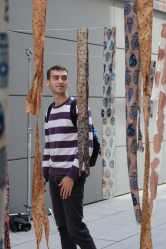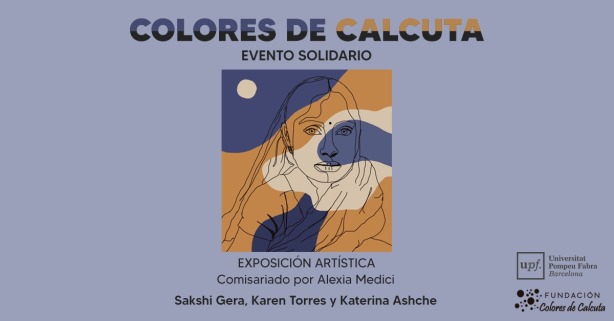In this fundraising event curated by Alexia Medici, artists Katerina Ashche, Sakshi Gera and Karen Torres look at the past to understand the present. Each, in her own way, recreates a new condition by adapting the past of others from their native cultures to confront the theme of education from a radically different perspective.
I. Sakshi Gera
India (1992). In her artistic practice, Sakshi uses drawing as a starting point to speculate on the action of repetition. She uses this chant-like rhythm of gesture as a strike against tradition, revealing a space for her marks to perform and ponder issues of identity, nature, society and time to deconstruct hegemonic systems.
In North Indian classical performance, Alap is a melodic form of improvisation that introduces and develops a Rāga – an unmetered exercise unaccompanied by instruments, evoking emotional reactions in an audience.
In the same way, Sakshi creates आलाप (Alap) – a series of unmetered drawings that act as a complement to regularly recurring patterns or can stand alone. These drawings are unaccompanied by anything but a repeated line. These lines are the unmeasured first movement of the whole.
There is a temporal freedom that leads to exploring the entirety of a recurring present pulse to weave a melody.
II. Katerina Ashche
Russia (1973). Born in Moscow, Katerina Ashche is a storytelling artist. Her stories are based on personal experience and historical investigations. Although recollected as memories, one is never fully aware where the imaginary overlaps reality.
This project is dedicated to her grandmother Valentina Ivanova, a textile design student. All her grandmother’s classmates were killed within the first three years of WW2. Like most of the girls from her generation, she was left alone, with her dreams and hopes destroyed within months. During those years of war, the only question was a question of survival.
III. Karen Torres
Mexico (1978). In response to the political situation in Mexico, the artwork of Karen Torres is a claim to visibilize the disappearance of thousands of people every year.
The artist often takes specific events as her starting point. They are usually private stories that become public as a social complaint. The main purpose of the artist is to give visibility to worrisome situations that tend to disappear from the political social memory over time. Her pieces seek to re-inhabit this space of oblivion and create vertiginous environments that end up being nostalgic.
This video is a followup to “Erika” – a series of installations dedicated to a young Mexican woman who has been missing for 5 years. As in Erika’s case, the abandoned cars of those who have disappeared are often the only clues left.
In this video, Karen traces the last words written by the victims on Facebook.
***
The Colors of Calcutta Foundation is a Spanish NGO collaborating with the Indian NGO Seva Sangh Samiti, focusing on health and education, in Pilkhana, one of the most extensive and populated slums of the city of Calcutta (India).

















